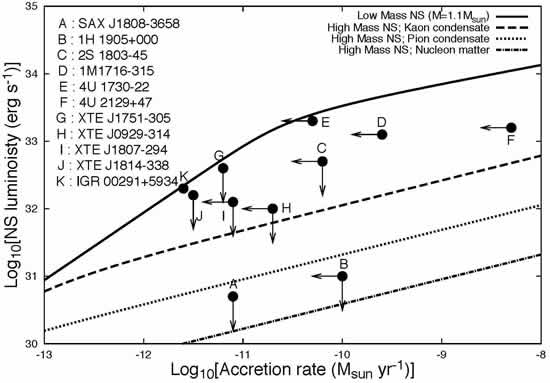Research Gallery > The Theoretical Astrophysics (Theory)
Research Gallery
The Theoretical Astrophysics (Theory)
| X-ray and Gamma-ray Emissions from Rotation Powered Millisecond Pulsars |
|
Image Credit: Takata, Cheng, and Taam

The results suggest that neutron stars in systems characterized by low thermal X-ray luminosities (i.e., SAX J1808-3658 and 1H 1905+000) may be of high mass.
|
| The thermal X-ray emission of an accreting millisecond pulsar in a X-ray transient system during its quiescent state can control the conditions of the particle accelerator in the outer gap of the magnetosphere and hence its gamma-ray emission properties. In addition, it can also be used as a probe of the properties of the underlying neutron star. As the X-ray emission is thought to result from deep crustal heating due to nuclear fusion, one can use the quiescent thermal X-ray luminosity from the neutron star surface coupled with the time averaged accretion rate of transient low mass X-ray binary systems to place constraints on its mass. The predictions are for a low mass neutron star (solid line) and for various enhanced cooling mechanisms of high mass neutron stars (Yakovlev et al. 2003). The observational data are taken from Heinke et al. (2009). The results suggest that neutron stars in systems characterized by low thermal X-ray luminosities (i.e., SAX J1808-3658 and 1H 1905+000) may be of high mass. (Takata, Cheng, and Taam 2012, ApJ, 745, 100) |
 asiaa.sinica.edu.tw Media Request: epo
asiaa.sinica.edu.tw Media Request: epo asiaa.sinica.edu.tw
asiaa.sinica.edu.tw 